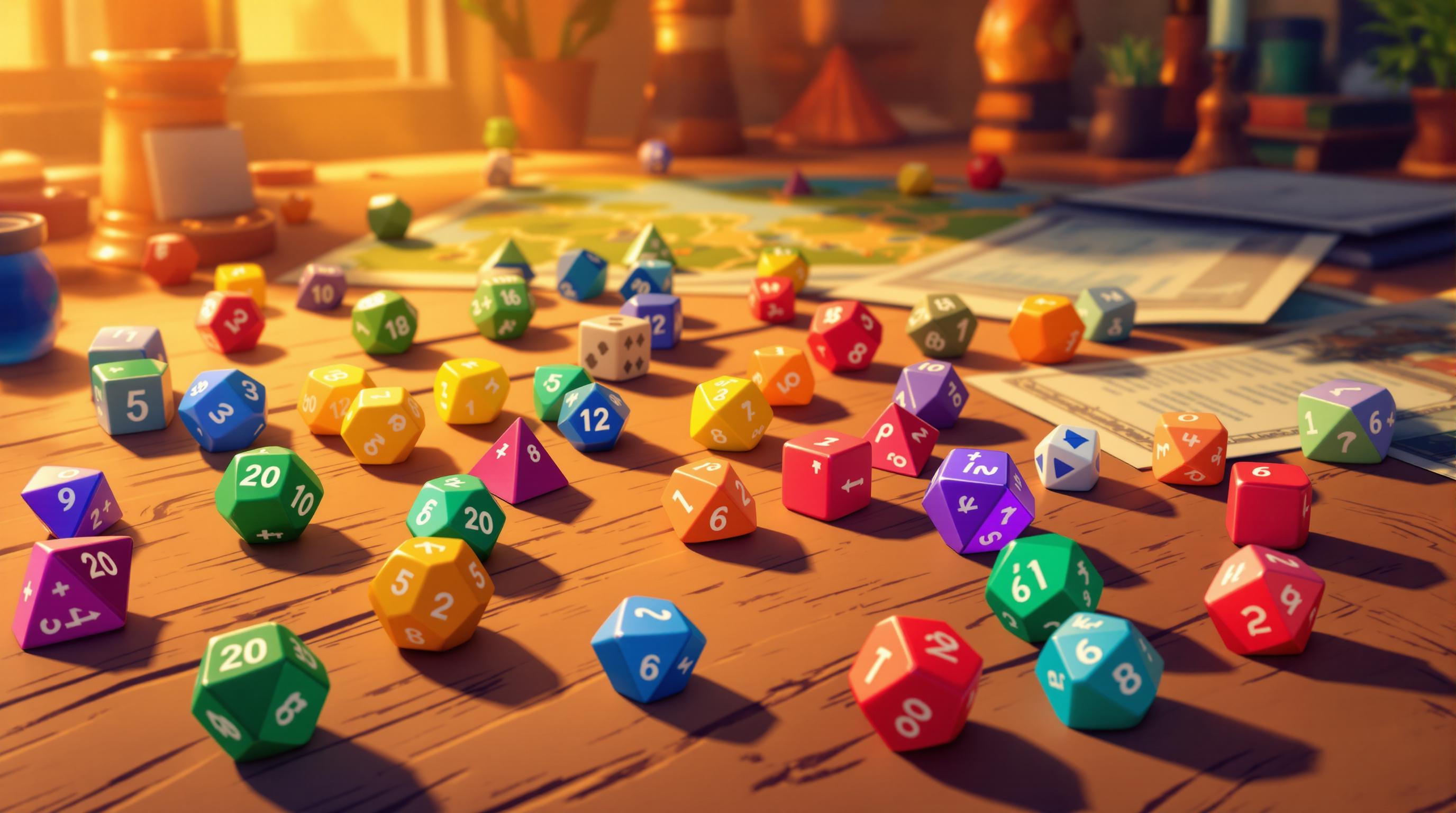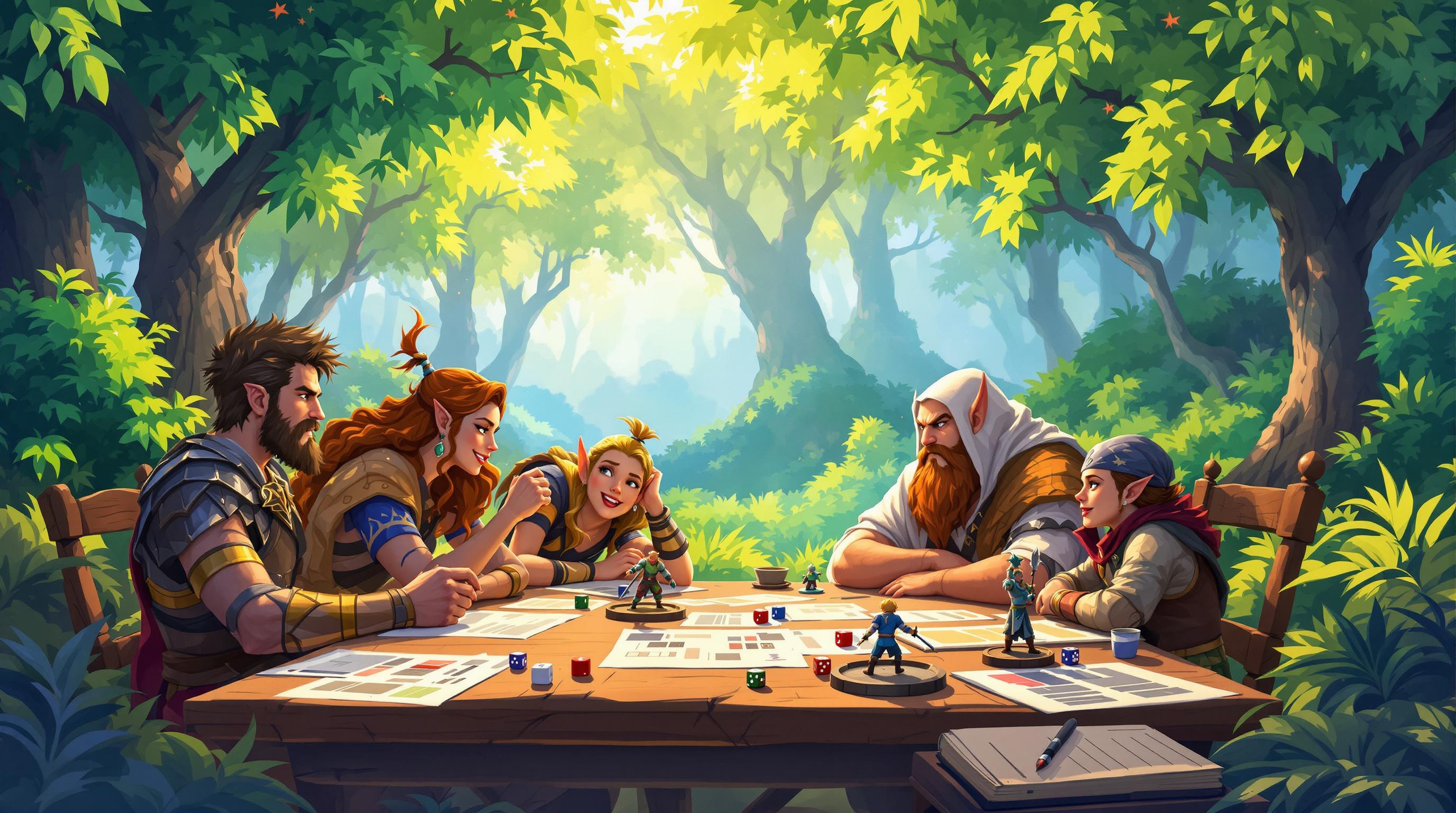Tabletop RPGs use two main storytelling styles: player-driven plots and GM-led stories. Here's a quick breakdown:
- Player-Driven Plots: Players shape the story through their decisions. The GM reacts to their actions, creating a dynamic and unpredictable narrative. Best for experienced players who enjoy creative freedom and collaboration.
- GM-Led Stories: The GM crafts and guides a structured narrative. Players make meaningful choices within a planned framework. Ideal for new players or groups seeking a consistent and steady-paced story.
Quick Comparison
| Feature | Player-Driven Plots | GM-Led Stories |
|---|---|---|
| Narrative Direction | Emerges from player actions | GM-guided with input |
| World Flexibility | Highly adaptable | Structured with tweaks |
| GM Prep | Minimal, improvisational | Detailed, pre-planned |
| Player Role | High involvement | Moderate involvement |
| Best For | Creative, proactive players | Beginners or mixed groups |
Both styles have pros and cons, and the best choice depends on your group's preferences. You can even combine elements of both for a balanced experience.
Main Features of Each Method
How Player-Driven Plots Work
In player-driven plots, the story evolves directly from the players' decisions. The GM's role shifts to being more of a guide, reacting to the players' actions rather than dictating the narrative.
Key elements include:
- Character Motivations: Players' personal goals and backstories take center stage, shaping the direction of the story.
- Dynamic World Response: The GM adjusts the game world - events, NPC behavior, and challenges - in real-time based on what players do.
- Collaborative Problem-Solving: Players tackle obstacles in creative ways, without relying on pre-set solutions.
Games like Blades in the Dark and Dungeon World highlight this style, with mechanics that let players actively define parts of the world, introduce NPCs, and suggest twists in the plot.
How GM-Led Stories Work
In GM-led stories, the Game Master takes a more structured approach, crafting the overall narrative while managing the pacing and flow of the game.
Key components include:
- Story Structure: The GM plans major plot points and controls the pace to create tension and drama.
- World Framework: The GM establishes the setting and overarching plot but still incorporates player contributions.
- Designed Encounters: The GM develops encounters tailored to fit the story and its progression.
Traditional games like Dungeons & Dragons thrive with this method, especially when using published adventure modules. These modules provide a structured narrative while still allowing room for players to make meaningful choices.
| Feature | Player-Driven Plots | GM-Led Stories |
|---|---|---|
| Narrative Direction | Emerges through collaboration | GM-guided with player input |
| World Adaptability | Highly flexible | Structured with planned tweaks |
| Preparation Style | Broad framework | Detailed planning |
| Session Flow | Organic and player-paced | Structured and GM-led |
Recognizing these features helps in understanding the strengths and challenges associated with each approach.
The Ultimate Guide to Character-Driven Storytelling
Pros and Cons
Knowing the strengths and challenges of player-driven plots versus GM-led stories can help your group pick the style that fits your playstyle and campaign goals.
Side-by-Side Comparison
Each of these storytelling methods impacts the campaign's flow, engagement, and overall satisfaction in unique ways:
| Aspect | Player-Driven Plots | GM-Led Stories |
|---|---|---|
| GM/Player Workload | Minimal pre-planning, relies on improvisation | Heavy pre-planning, managed structure |
| Player Investment | High, driven by player decisions | Moderate, centered on character choices |
| Story Coherence | Unpredictable, may have loose ends | Clear structure, steady progression |
| Game Pacing | Player-determined, can vary widely | Consistent, controlled by GM |
| Creative Freedom | Broad opportunities for world-building | Actions guided within a set framework |
| Learning Curve | Tough for GMs, flexible for players | Easier for beginners with structured guidance |
| Campaign Length | Works well for shorter campaigns | Better for long-term story arcs |
Player-driven plots work especially well in heist-style campaigns, where players can take full control of planning and execution [1]. This style requires the GM to think on their feet, but it allows players to deeply influence the story, boosting their engagement.
On the other hand, GM-led stories thrive in event-driven games or scenarios with carefully crafted challenges. The structured approach lets the GM create tension-filled encounters and cinematic moments [1]. This consistency helps maintain the narrative across multiple sessions.
Player-driven plots are ideal for groups with experienced, proactive players, while GM-led stories are a great choice for newcomers due to their guided format. The former demands improvisation and offers high engagement, while the latter provides a polished experience with steady pacing.
Next, we’ll dive deeper into how to decide which approach is right for your campaign.
sbb-itb-b8b00a5
When to Use Each Method
Best Times for Player-Driven Plots
Player-driven plots work best in campaigns where players have the freedom to shape the story. These are ideal for groups with experienced players who are familiar with the game mechanics and enjoy improvising.
Sandbox campaigns thrive on this approach, as they rely on players taking initiative and exploring the world at their own pace. This method shines when players are eager to collaborate, make decisions, and explore, while the Game Master (GM) is comfortable adapting on the fly.
Campaigns that involve strategic planning and tactical execution also align well with player-driven plots, as they require players to take charge and think critically about their actions.
Best Times for GM-Led Stories
GM-led narratives are perfect when structure and consistency are essential. This approach works well in scenarios where pacing and plot development need to stay on track.
| Scenario | Why It Works |
|---|---|
| New Player Groups | Offers clear guidance and helps players learn the basics |
| Time-Limited Campaigns | Keeps the story focused to fit within a set number of sessions |
| Complex Plot Lines | Ensures consistency across detailed and layered narratives |
| Event-Driven Stories | Allows for dramatic moments and big reveals at the right time |
| Mixed Experience Levels | Balances participation for players with varying skill levels |
This method is particularly effective for new groups, campaigns with tight schedules, intricate storylines, and moments that hinge on precise timing. It also helps ensure that everyone, regardless of experience, stays engaged.
Ultimately, the best choice depends on your group's preferences and style. You can even combine elements of both methods to create a dynamic and engaging storytelling experience.
Combining Both Methods
For groups looking to enjoy the advantages of both approaches, merging player-driven and GM-led elements can create a rich and dynamic gaming experience.
Mixed Storytelling Tips
Combining these styles means finding the right balance between giving players freedom and maintaining a structured narrative. Focus on creating key plot points that adjust to player decisions rather than sticking to a rigid storyline.
| Technique | How It Works | Why It Helps |
|---|---|---|
| Scene Structure | Design scenarios with clear stakes while weaving in character-focused moments | Keeps the story on track while highlighting individual player contributions |
| Flashback Mechanics | Let players add relevant details from their character's past during gameplay | Encourages creativity while fitting into the GM's broader narrative |
| "Yes, and..." Approach | Build on player ideas while subtly guiding them toward the plot | Fosters collaboration without losing narrative direction |
RPG Systems for Mixed Play
Some RPG systems are built to strike this balance, offering tools that support both player creativity and GM oversight.
Dungeon World uses a move-based system that encourages players to take narrative control while giving GMs the tools needed to guide the story. This creates a natural back-and-forth dynamic between the players' choices and the GM's responses.
Fate Core is another great option, featuring aspects and fate points that let players influence the story while keeping the GM in charge of the overall direction. These systems offer flexible rules that work well for both player-driven and GM-led styles.
For groups seeking the right system, the TTRPG Games Directory is a helpful resource. It highlights games with mechanics designed to balance player agency and GM guidance, making it easier to find a system that fits mixed storytelling approaches.
Mixing player input with GM structure can lead to an engaging and cohesive story that keeps everyone invested.
Making Your Choice
Main Points to Remember
Your success depends on understanding what your players want - how much narrative control they’re comfortable with and the kind of experience they’re after.
| Factor | Player-Driven Plots | GM-Led Stories |
|---|---|---|
| Group Type | Players who enjoy shaping the story | Those who prefer structured, guided gameplay |
| Preparation | Flexible planning focused on world-building | Detailed outlines with planned story beats |
| Game Pacing | Changes based on player decisions | Steady, following pre-planned events |
| Story Focus | Character-driven and goal-oriented narratives | Larger plots with established themes |
Adapt as you go - pay attention to how engaged your players are and tweak your approach if needed. Once you know what works for your group, the next step is picking the right game system to bring it all together.
Find More Games
The right game system can make or break your campaign. For instance, Blades in the Dark is great for collaborative, player-driven storytelling, while Call of Cthulhu shines in structured, GM-led adventures.
Check out the TTRPG Games Directory to discover systems that match your preferred style. It’s a great resource for finding something that fits your approach.
Start with shorter story arcs. This gives you room to test your method and adjust based on how your players respond before diving into longer campaigns.


